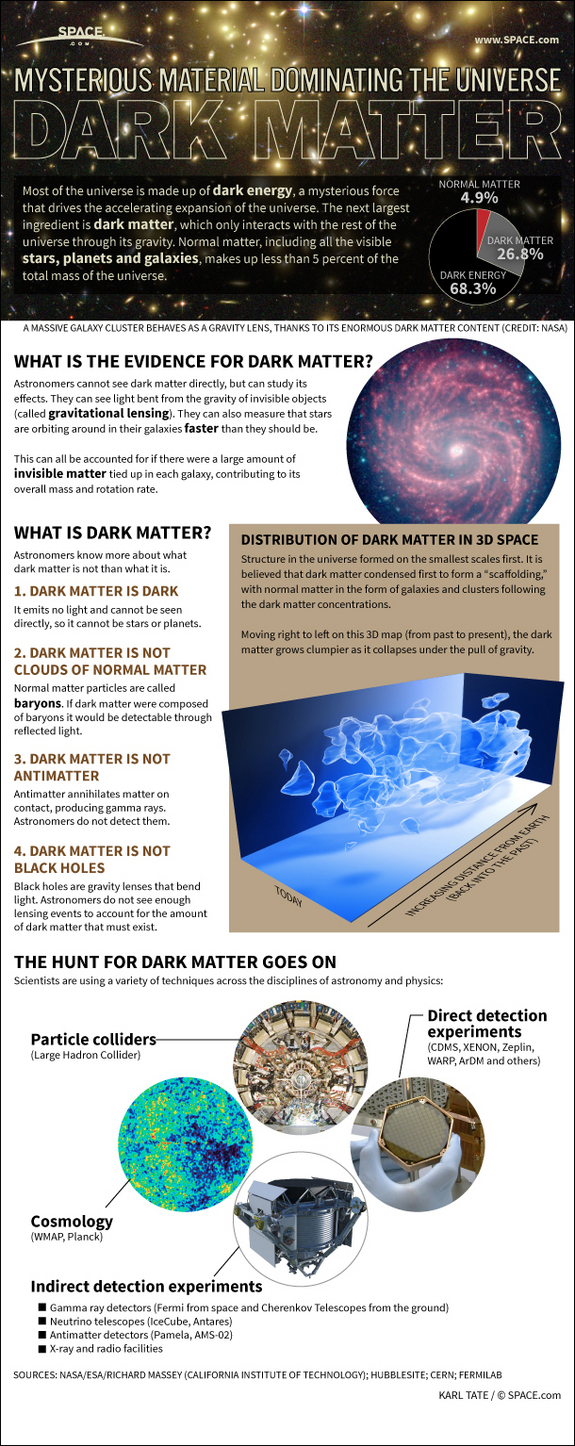Most of the universe is made up of dark energy, a mysterious force that drives the accelerating expansion of the universe. The next largest ingredient is dark matter, which only interacts with the rest of the universe through its gravity. Normal matter, including all the visible stars, planets and galaxies, makes up less than 5 percent of the total mass of the universe.
Astronomers cannot see dark matter directly, but can study its effects. They can see light bent from the gravity of invisible objects (called gravitational lensing). They can also measure that stars are orbiting around in their galaxies faster than they should be.

Dark matter is dark: It emits no light and cannot be seen directly, so it cannot be stars or planets.
Dark matter is not clouds of normal matter: Normal matter particles are called baryons. If dark matter were composed of baryons it would be detectable through reflected light. [Gallery: Dark Matter Throughout the Universe]
Dark matter is not antimatter: Antimatter annihilates matter on contact, producing gamma rays. Astronomers do not detect them.
Dark matter is not black holes: Black holes are gravity lenses that bend light. Astronomers do not see enough lensing events to account for the amount of dark matter that must exist.
Source SPACE.com: All about our solar system, outer space and exploration








